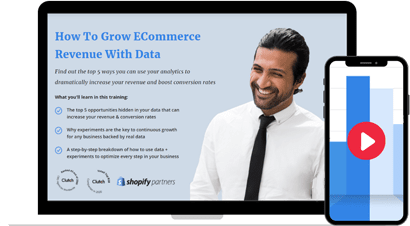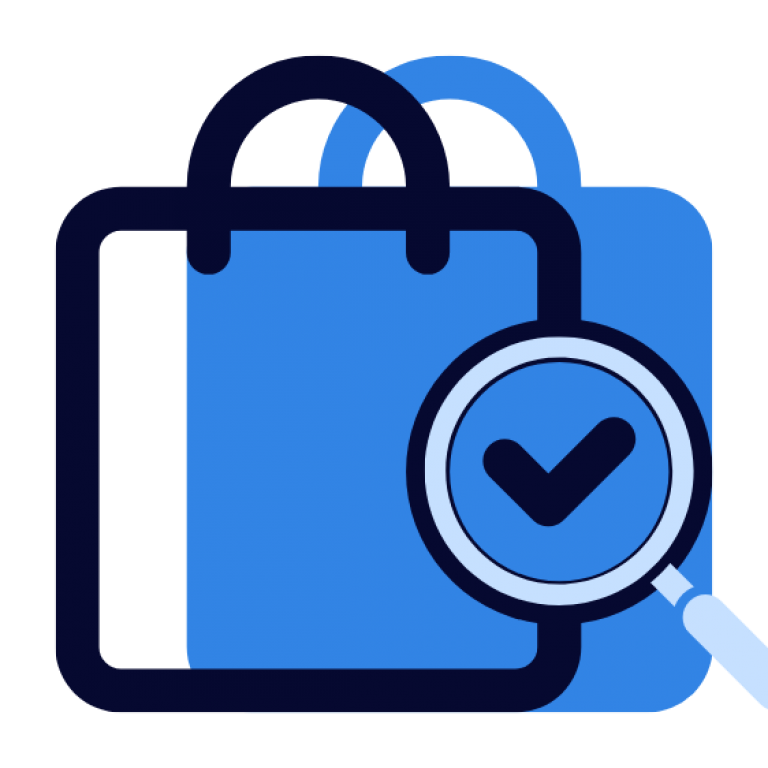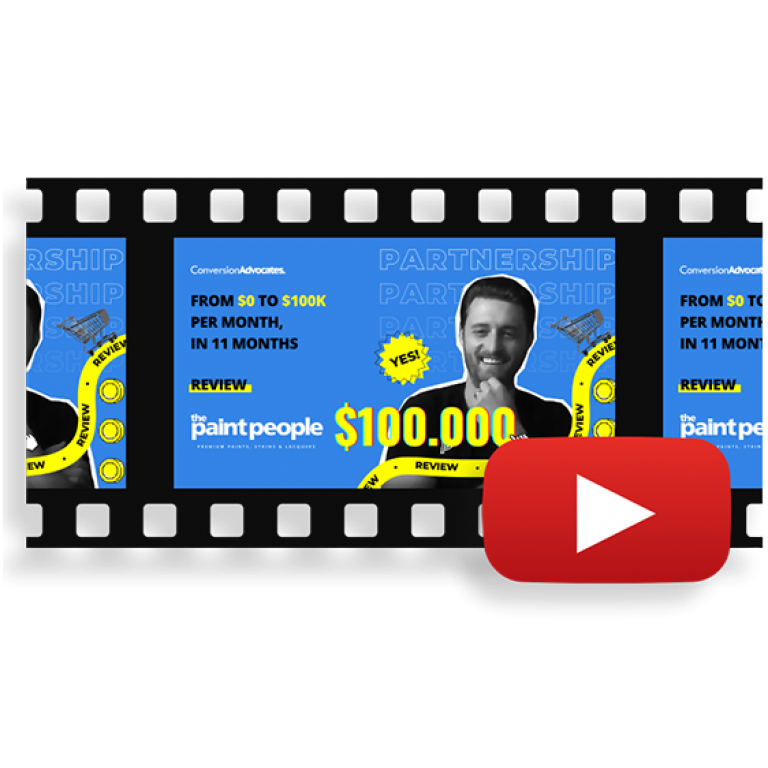a 6-minute read | Editor’s Note: This post was originally published in June 2020 and has been updated in September 2020 for accuracy and comprehensiveness.
You can have a beautiful website with a wonderful copy that truly reflects the quality of your business – but it still might not be performing at its best when it comes to actually making conversions.
Having a landing page optimization strategy is how you can change that, starting today. We’ve brought together all of our best advice and top tips on optimizing your landing page and tracking landing page conversions in Google Analytics. Plus, we’ve got a special challenge at the end which will set you on the right path towards a glowing landing page optimization strategy. Are you ready? Let’s get started:
- The importance of landing page optimization
- What are landing page conversion rates
- Why should we track landing page conversions
- Tracking landing page conversions in Google Analytics
- What is split testing and why is it so important
- The challenge
1 | The Importance of Landing Page Optimization
So why is landing page optimization strategy so important? It’s simple: you’ve spent time building a space online where visitors can come to learn about your business. Building a reputation and presence online really isn’t easy; most online businesses fight tooth and nail for every visitor that comes their way. So you have to ask yourself – what have you done to ensure that you are getting the most out of every user that enters your website? Is it something that you have even put a great deal of thought into?
For many businesses, the most lucrative choice they can make is to pursue strategies for making the most of their current visitors, rather than exploring ways to increase traffic. Sales, conversion strategy, and copywriting aren’t skills that every small business owner has but are definitely necessary for creating lasting success online. If you think it’s something that could help you and your business, not to worry – we’ve got some insider tips on how to get started.
2 | What Are Landing Page Conversion Rates
Conversion rates are fairly simple: the rate in which visitors to your website take the desired action.
For most businesses, the desired action is purchasing the product or service. For other businesses, it might be entering your information into a lead-capture form or calling the business to begin the sales process.
Tracking landing page data is of the utmost importance for understanding your conversation rates. If 100 people visit your website and five people buy your product, then your conversion rate is 5%. This rate tells you a lot about the effectiveness of your website or landing page. If your conversion rates are too low, you might need to improve your landing page optimization strategy.
If the purpose of your website is to sell products to a user, you want to make sure that the website is set up to sell that product to the best of your ability. This is done through carefully crafted copy that subtly leads the user toward taking action, which in this case would be purchasing your product.
It may well take more than one website visit to convince someone to buy, especially for bigger ticket items that are more of an investment for the user. That’s why having a strategy in place for lead conversions is vital. That could involve supplying them with useful content to convince them that your business is both trustworthy and helpful, follow-up sales calls, or means of assuaging any doubts that they might have.

3 | Why Should We Track Landing Page Conversions
When building landing page optimization strategy, it is also important to ensure that you have enough data to make an educated decision. The higher the visitor numbers, the better chance you have of getting reliable results during each split test.
100 visitors won’t tell you much. There are always outliers with small amounts of data. That person that backed out at the last minute affects your conversion rate by 1% when you are analyzing 100 visitors. That’s a big data jump from just one action, so it’s not overly reliable.
Ideal data amounts differ based on industry, but you should allow several thousand visitors to hit each page before trying to make any determinations about how the new page performed.
In order to make the most of the traffic you are receiving you have to have an understanding of the metrics and strategies used in improving your web pages, so tracking landing page conversions in Google Analytics is a good place to start. We’ll tackle that later on in the article.
4 | Tracking Landing Page Conversions in Google Analytics
So, how to get started? Tracking your conversion rate can be really simple or really complicated – it all depends on your business.
In cases where a conversion consists of the visitor making the purchase directly from your website, tracking is easy to implement. If the conversion process includes a phone call, tracking can be a little bit more difficult.
The most commonly used tracking software is Google Analytics. There is a good chance you already use it to track visitors to your website, but perhaps you haven’t moved on to its more advanced features: tracking landing page conversions in Google Analytics.
The most important thing to remember when tracking conversions is that not all data was made equal. You need to know how to filter out and segment your data so the results you see are both relevant and accurate. Our top two tips are to make sure you filter out bounce data, and to segment your data according to different user groups. Different demographics behave differently and make purchases differently: make sure your data reflects these different influences.
When it comes to choosing software, there are many different options that can help you to track conversions with varying levels of detail and accuracy. For most businesses, tracking conversions in Google Analytics should provide you with more than enough information to get started.
5 | What Is Split Testing and Why Is It So Important
Split testing is the most commonly used method for improving the conversion rate of your landing pages. Also known as A/B testing, split testing refers to the process of changing portions of your landing page and seeing how those changes affect the conversion rate on your website.
These experiments essentially show users two or three versions of your web page. Each version has a single change from the original page. Using your tracking software, you see how these changes affect the actions of your users.
Do the new changes prompt users to make purchases more often? Do they stay on certain pages longer? Or is it having the opposite effect?
There are many elements of a landing page that are commonly changed and tested. Some of the more common elements that are altered in the testing phase include;
- Media. Try changing banners, pictures, videos, and colors to see how it affects the conversion rate of a given page.
- Headlines. The headline of your landing page is arguably the most important aspect. It certainly is the most critical part of the page for capturing users’ attention and convincing them to read on.
- Layout changes. Try moving things around. Have something right-aligned? Try moving it to the center and the left, and run a test on each.
Making these simple changes and observing the effects that it has on your conversion rate, click-through rate, and other metrics can give you a lot of insight into your customers and help you better capture their attention with future marketing materials. Data like this should always be underpinning any decisions you make when it comes to landing page optimization strategy.
Pro Top
Most businesses don’t realize that the process of split testing never really ends. Some might see an improvement to their conversion rate and move on without realizing that they could actually take it a step farther.
Even a small improvement in conversion rates can pay off in a big way in the long term. That 0.2% uptick in conversion rate could translate to hundreds of sales over the course of a year.
Split testing new ideas is always worthwhile. If it performs worse, you can always revert back to your previous design and you will still have learned something valuable.
CHALLENGE: Determine Your Conversion Rate
If you’re a regular on our blog (welcome back!), you’ll know that we often close with some final thoughts. Today though, we’re mixing it up. Because it’s always good to experiment and try new things, right? We are challenging you to get started on your landing page optimization strategy.
If you have never done any landing page optimization in the past, the first and most important step that you should take is to determine where your conversion rate is currently sitting.
Use our advice on tracking landing page conversions in Google Analytics to get that essential data you need to get started. Remember our two top tips as you go. Then contact us and we can put together a plan for improving that conversion rate. We will set you up with a free consultation to have a chat, learn about your business, and design a custom plan for your customer base. The ball is in your court – let’s get going!



